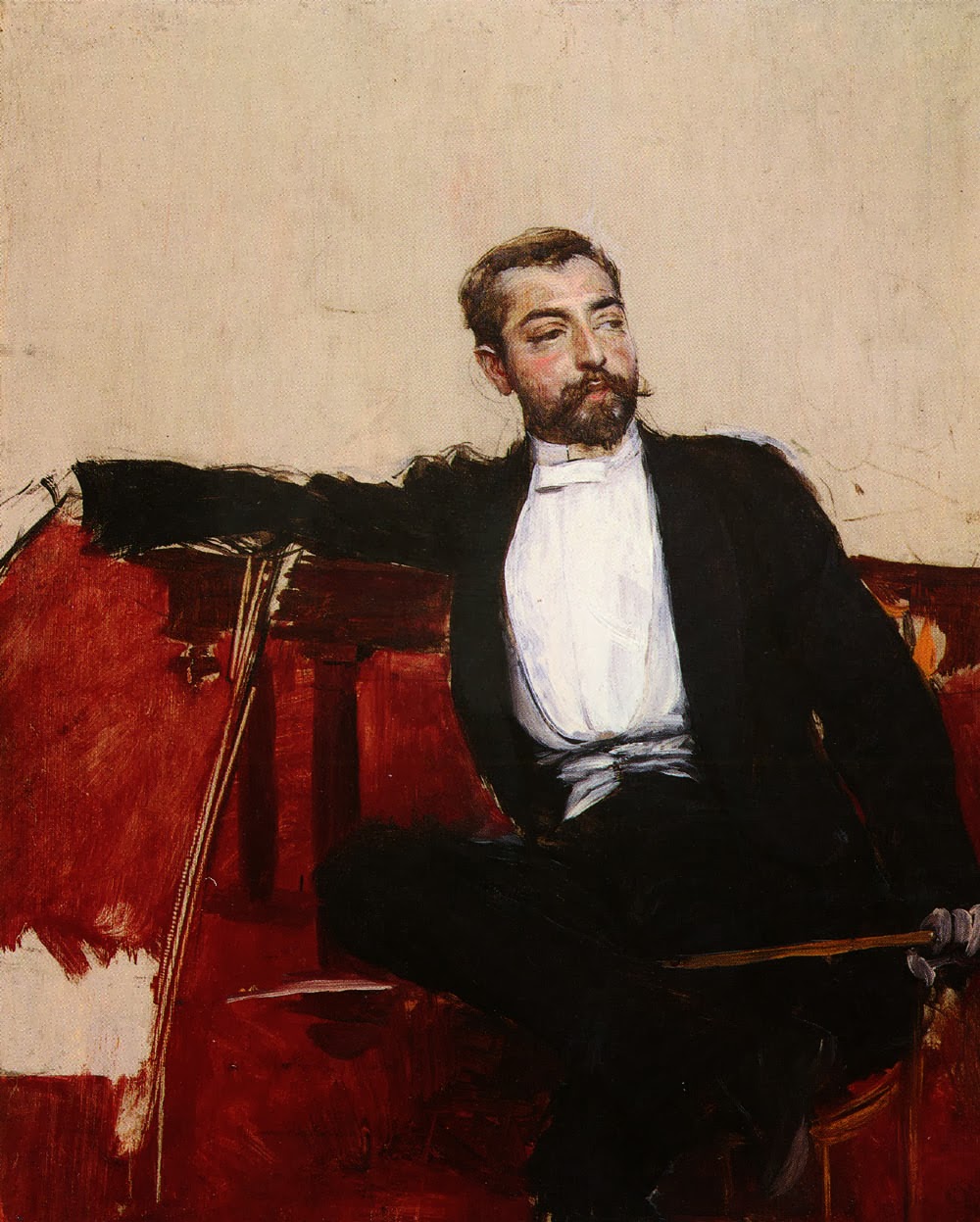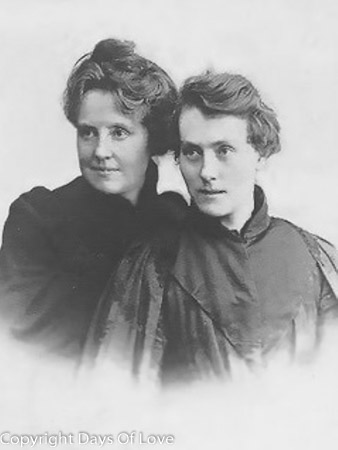|
Gay Wisdom for Daily Living brought to you by White Crane Institute ͏ ͏ ͏ ͏ ͏ ͏ ͏ ͏ ͏ ͏ ͏ ͏ ͏ ͏ ͏ ͏ ͏ ͏ ͏ ͏ ͏ ͏ ͏ ͏ ͏ ͏ ͏ ͏ ͏ ͏ ͏ ͏ ͏ ͏ ͏ ͏ ͏ ͏ ͏ ͏ ͏ ͏ ͏ ͏ ͏ ͏ ͏ ͏ ͏ ͏ ͏ ͏ ͏ ͏ ͏ ͏ ͏ ͏ ͏ ͏ ͏ ͏ ͏ ͏ ͏ ͏ ͏ ͏ ͏ ͏ ͏ ͏ ͏ ͏ ͏ ͏ ͏ ͏ ͏ ͏ ͏ ͏ ͏ ͏ ͏ ͏ ͏ ͏ ͏ ͏ ͏ ͏ ͏ ͏ ͏ ͏ ͏ ͏ ͏ ͏ ͏ ͏ ͏ ͏ ͏ ͏ ͏ ͏ ͏ ͏ ͏ ͏ ͏ ͏ ͏ ͏ ͏ ͏ ͏ ͏ ͏ ͏ ͏ ͏ ͏ ͏ ͏ ͏ ͏ ͏ ͏ ͏ ͏
|
|
||||
| This Day in Gay History | ||||
January 12Born 1856 - JOHN SINGER SARGENT American portrait painter, born (d:1924) was the most successful portrait painter of his era, as well as a gifted landscape painter and watercolorist. Sargent was born in Florence, Italy to American parents. He studied in Italy and Germany, and then in Paris under Emile Auguste Carolus-Duran. Among the artists with whom Sargent associated were Dennis Miller Bunker, Carroll Beckwith, Edwin Austin Abbey (who also worked on the Boston Public Library murals), Francis David Millet, Wilfred de Glehn, Jane Emmet de Glehn and Claude Monet, whom Sargent painted. Sargent developed a life-long friendship with fellow painter Paul Cesar Hellu, whom he met in Paris in 1878 when Sargent was twenty-two and Helleu was eighteen. Sargent painted both Helleu and his wife Alice on several occasions, most memorably in the impressionistic Paul Helleu Sketching with his Wife, 1889. His supporters included Henry James, Isabella Stewart Gardner (who commissioned and purchased works from Sargent, and sought his advice on other acquisitions), and Edward VII, whose recommendation for knighthood the artist declined. Hmmmm…? Why would someone decline a knighthood? (and all the associated publicity that would come with it?) Sargent was, as they say, “extremely private regarding his personal life,” though the painter Jacques-Émile Blanche, who was one of his early sitters, said — after his death — that Sargent's sex life "was notorious in Paris, and in Venice, positively scandalous. He was a frenzied bugger." Ah yes…the frenzied bugger. As homophobic scholars put it, “the truth of this may never be established.” Some have gone so far as to boldly suggest that Sargent was homosexual. In a word: whatever. He had personal associations with Prince Edmond de Polignac and Count Robert de Montesquiou (the model for Des Esseintes in Huysman's A Rebours, and even more famously, the Baron de Charlus in Prousts A la recherche du temps perdu, and, in real life, if you will, Prince Polignac’s life-long lover, as well), two of the biggest queens of the age. Sargent’s male nudes reveal complex and well-considered artistic sensibilities about the male physique and sensuality; particularly evident in his portrait of Thomas E. McKeller (by all means Google this picture…”complex and well-considered”…indeed!), but also in Tommies Bathing (ditto), nude sketches for Hell and Judgement, and his portraits of young men, like Bartholomy Maganosco and Head of Olimpio Fusco (perhaps this writer’s personal favorite from the earliest age, male beauty in the most judicious of painterly strokes. Stunning. Exquisite.) There were friendships with women, as well, and a similar sensualism informs his female portrait and figure studies (notably Egyptian Girl, 1891). The likelihood of an affair with Louise Burkhardt, the model for Lady with the Rose, and the first wife of author J.R. Ackerley’s father (see Ackerley’s “My Father and Myself”), is accepted by Sargent scholars. Sargent’s friends went so far as to wonder if he and Burckhardt had formed a romantic attachment. His enthusiasm while creating the picture of her probably instigated the rumors, but a mutual friend learns from Sargent in 1882 that “he does not care a straw for her.” Despite numerous friendships with women throughout his life, this is the only episode to cause associates to doubt his status as a “committed bachelor.” Really…whatever. Check out the paintings mentioned here yourself. They’re all easily available on line or in a museum near you. It doesn’t take much to see where Sargent’s heart’s desire lays. His sensuous, unparalleled appreciation of male beauty leaps off the canvas to this day. 1862 - EDITH EMMA COOPER, American author and poet born (d: 1913); with her aunt/lover Katherine Harris Bradley, Cooper wrote poetry and plays under the joint pseudonym “Michael Field.” As Field they wrote around forty works together, and a long journal Works and Days. Their intention was to keep the pen-name secret, but it became public knowledge, not long after they had confided in their friend Robert Browning. The journal reveals that they were Lesbian lovers, over a long period. Katherine Bradley was educated at the College de France and Newnham College, and became Edith Cooper's guardian since her mother was disabled. Bradley was for a time involved with Ruskin's utopian project. She published first under the pseudonym Arran Leigh, a nod to Elizabeth Barrett. Edith adopted the name Isla Leigh. From the late 1870s, when Edith was at University College, Bristol, they agreed to live together; they were to be suffragists and oppose vivisection. The first joint publication as Michael Field was in 1884. They had financial independence: Bradley's father Charles Bradley had been in the tobacco industry in Birmingham. They developed a large circle of literary friends and contacts; in particular Charles Ricketts and Charles Shannon, near whom they settled in Richmond, London. While they were always well connected, the early critical success was not sustained (something that is often attributed to the joint identity of Field becoming known). They knew many of the aesthetic movement of the 1890s, including Walter Pater, Vernon Lee, J.A. Symonds and also Bernard Berenson. William Rothenstein was a friend. Their joint journal starts with an account of Bradley's passion forAlfred Gerente, an artist in stained glass and brother of Henri Gerente, who was of an English background but worked mostly in France. It goes on to document Michael Field as a figure, amongst 'his' literary counterparts, and a pet dog. When the latter died in 1906, the emotional pattern of the relationship was disturbed; both women became Roman Catholic converts in 1907. Their religious inclinations are reflected in their later works, where their earlier writing is influenced by classical and Renaissance culture, in its pagan aspects particularly, Sappho as understood by the late Victorians, and perhaps Walter Savage Landor. Edith died of cancer in 1913, as did Katherine less than a year later. A much-edited selection from the journals, which were two dozen annual volumes in ledgers with aspects of scrapbooks combined with a self-conscious literary style of composition, was prepared by T. Sturge Moore, a friend through his mother Marie. | ||||
|
|8|O|8|O|8|O|8|O|8|O|8|O|8|O|8| Gay Wisdom for Daily Living from White Crane Institute "With the increasing commodification of gay news, views, and culture by powerful corporate interests, having a strong independent voice in our community is all the more important. White Crane is one of the last brave standouts in this bland new world... a triumph over the looming mediocrity of the mainstream Gay world." - Mark Thompson Exploring Gay Wisdom & Culture since 1989! |8|O|8|O|8|O|8|O|8|O|8|O|8|O|8| | ||||
|
|||||
|



